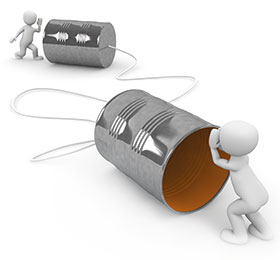

In today’s world of nearly ubiquitous cellular coverage and smartphones that can transmit voice, data, images and video with ease, it is only reasonable to question the relevance of that old stalwart, the two-way radio. According to local specialist, Global Communications, two-way radios are still the choice of first responders such as the police, ambulance services and fire brigades, and that won’t be changing any time soon.
One of the main reasons for this preference is that these applications communicate primarily by means of voice, and whereas cellular devices are geared more for one-to-one communication, two-way radios can broadcast to large groups of up to 1000 users. And although two-way radios have been around for decades, the technology powering them hasn’t stood still. Analogue technology has been surpassed by digital advances that produce better audio clarity, especially in fringe areas of coverage, and extended range that can be up to 12% better than analogue.
Ongoing data and cellular costs run the risk of getting out of hand, and cellular connections are not always as reliable as a dedicated radio network since they are at the mercy of a service provider – a dropped call during an emergency could prove disastrous. While the initial cost of a digital radio is more expensive when compared to analogue, once the device is acquired it can be used without limitations with no further costs. As the industry continues to migrate to digital radios, they have become more affordable and should continue to do so as analogue is further phased out. It is worth noting that most two-way radio manufacturers are withdrawing legacy analogue technology which is now being superseded by digital.
Modern digital radios have some other tricks up their sleeves too, such as GPS tracking which has become a staple for portable and mobile users. This allows small businesses, for example, to track their members on a regular desktop computer – a feature that’s invaluable in the security industry.
All communication can also be recorded for reference and later reviewed and audited, and is admissible in a court of law. Kenwood has taken this one step further and added a SD card to its NX-5000 series of radios, allowing the device to record all conversations as well as save its GPS coordinates. This is very useful in situations where operators in mission critical environments are separated from the device and the organisation wants to review the last location and conversation, much like a black box in an aircraft. Short data messaging is also invaluable, along with status messaging for those who don’t like to type. Encryption is standard with digital devices, which prevents casual eavesdropping.
TDMA (DMR) and FDMA (NXDN) have emerged as the de facto standard protocols for digital radio. TDMA (time division multiple access) boasts two time slots in a 12,5 kHz carrier wave, which allows two separate groups to operate in an analogue carrier wave. This gives the advantage of doubling up on the number of users on a community repeater. FDMA (frequency division multiple access) is unaffected by time and thus provides better communication range.
The ideal protocol depends on the specific application, and the decision-making criteria sometimes have the unfortunate effect of making users reluctant to move into the digital realm. To overcome this, Kenwood builds portables and mobiles that support both formats in one device, in the form of the NX-3000 series. This device can also transmit pre-recorded audio files and transmit at the push of a button.
This functionality can, for example, be beneficial in the case of a pensioner with a heart condition. Should they experience any difficulty, they could press a predetermined button on a portable which would send a pre-recorded emergency audio message of their identity, address and information on allergies to any types of medication. This can also be done via a preset data message and sent simultaneously to a control room.
Global Communications has had success with the South African National Defence Force (SANDF) with the same product which is now available to the consumer, regardless of the size of their organisation.
For more information contact Global Communications, +27 (0)12 621 0400, [email protected], www.globalcomms.co.za.
| Tel: | +27 11 401 6700 |
| Email: | [email protected] |
| www: | www.globalcomms.net |
| Articles: | More information and articles about Global Communications |

© Technews Publishing (Pty) Ltd. | All Rights Reserved.